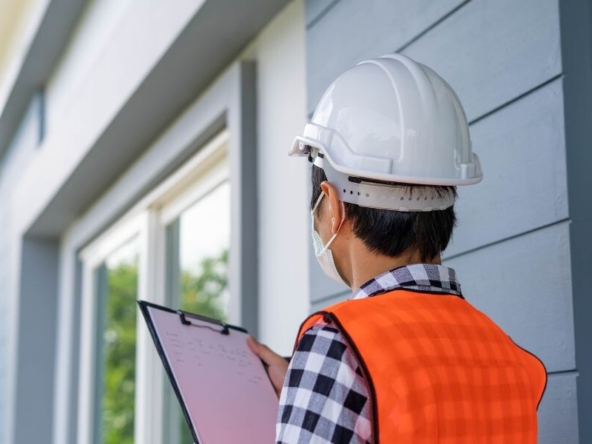You’re preparing to list a property. You know that the right words can draw potential buyers into your open house or send them scrolling past your listing. Crafting an effective property description requires clarity, precision with language selection, and demonstrating compelling reasons why this is their dream home in waiting—without overpromising!
Now, let’s delve deeper: how do you effectively use these elements to write successful real estate listings?
Write a Captivating Title and Description
The captivating title and description form key components of a well-crafted property listing. To create an engaging title, focus on the unique features or selling points like “Spacious 3-Bedroom House with Scenic Park Views.” This hooks potential buyers with intriguing details right from the get-go.
Next comes your detailed write-up about the home itself, what some refer to as ‘property storytelling.’ Here, you’re targeting emotions rather than just relaying dry facts. Your first sentence should engage readers immediately by zeroing in on standout elements: ‘Welcome to tranquility; this sun-drenched abode offers majestic park views throughout.’
Continue highlighting advantages linked directly to featured amenities without detailing these outright. Let aspects such as large windows translate into benefits like ample natural light that brightens up living spaces.
Remember, choose evocative adjectives wisely, for their power lies in conveying extra layers of meaning, thus enhancing perceived value. Break down your descriptions thoughtfully into opening statements and then body content while keeping it concise yet impactful.
Use High-Quality Attractive Photos
When crafting a good property listing, don’t overlook the value of attractive photos. Use high-resolution, clear images that highlight your home’s best assets. Consider employing professional real estate photographers who can capture strategic angles and make spaces appear more spacious or inviting than they might in person.
Remember to showcase each room effectively, from the chic living area with its rich hardwood floors to the stylish kitchen boasting quartz countertops and brand-new appliances. Let potential buyers visualize lazy Sunday mornings spent on that sunlight-soaked patio surrounded by lush greenery or serene moments unwinding in an airy master bedroom after a long day at work. Bright, well-lit pictures evoke optimistic feelings about space, while darker ones may feel gloomy or constrictive despite being aesthetic at times.
Also, include some unique features within these pictures; perhaps it’s custom cabinetry along one wall, or maybe there’s a fireplace tucked away so beautifully inside. Tasteful editing should be applied sparingly; avoid overly saturating colors, as this could give off false impressions about actual lighting conditions onsite during viewings later down the line. However, do brighten shadows where necessary to enhance overall clarity.
Accurate Details and Specifications
As you craft your property listing, go beyond basic details. Mention the distinguishing aspects of the home that aren’t visible in photos. Talk about high-quality materials or recent renovations.
Play up unique features like an outdoor fireplace, a custom-made kitchen island, or energy-efficient windows. Tell buyers if major systems like plumbing and electrical have been updated. Highlight any special amenities within walking distance, such as parks, restaurants, shops, or public transport stops, that make it stand out for those seeking convenience.
Next is the layout description. Narrate how each room flows into another, not merely stating the number of bedrooms and bathrooms but also describing the spaces’ uses, which can get potential buyers to visualize living there themselves. Think “home office” instead of “small extra bedroom.”
Carefully note areas outdoors, too. Well-landscaped yards are significant selling points, so mention them, and sizeable patios are usable year-round. The key lies in being both informative and engaging while giving readers reasons why they should buy this particular house.
Local Area Amenities
Local area amenities play a vital role in enhancing your property’s appeal. People often search for properties with proximate conveniences, such as restaurants, markets, parks, or landmarks, to maximize their stay experience. Don’t forget about external attractions near your place!
Provide details, but maintain concise descriptions of nearby facilities like coffee shops or grocery stores. You might mention trendy boutiques nearby for shopping lovers. If there are fascinating points of interest around you, such as galleries, theaters, or historical sites, highlight them too!
These aspects enrich your guests’ itineraries and make it easier for potential tourists to plan their journey ahead with less research. Discussing transportation options is also essential: bus stations and subway lines within walking distance from your location will be convenient information for any potential guest evaluating travel logistics. Don’t underestimate the power that local area amenities can have on swaying clients toward booking decisions; these additional features may just end up being what sets you apart from others.
Relevant Contact Information
In crafting a standout property listing, providing relevant contact information is essential. Make sure to include your name, telephone number, or email address in bold letters for better visibility. By doing so, you give potential buyers an easy way of getting in touch with you right away.
Avoid putting these details at the end of the description; it’s rather beneficial if they’re located somewhere immediate and clear at first sight. The aim is not just about offering pertinent data but also ensuring its prominence within your content layout. Furthermore, consider displaying office hours when responses can be expected swiftly.
This prevents unnecessary waiting time and frustration from interested parties. Prospective purchasers may have numerous queries related to their purchase decision-making process that demand quick replies, so such transparency fosters trust between both sides.
Follow-up Support Services
Prompt, effective follow-up support can give you an edge in the real estate market. Once your listing goes live, brace yourself for a flurry of inquiries from potential buyers. You need to address these queries with patience and clarity.
A well-planned response strategy will help steer clear of pitfalls while ensuring satisfaction on both ends. Prepare answers for commonly asked questions related to property aspects such as price negotiation or inspection schedules. Always seek advice from experienced peers about handling complex issues that may arise during discussion stages.
These could range from financing options to legal matters tied up with the deal. Dispatch updates regularly but avoid spamming their inbox; tweak your communication frequency based on feedback received over time. Ensure promptness when providing necessary paperwork, including documents detailing contractual obligations or transfer deeds; they’re crucial in sealing deals swiftly without any hassle!
Mastering property listing skills can help you manage properties better. Express the home’s uniqueness and highlight upgrades or key features. Write with passion to engage potential buyers emotionally.





